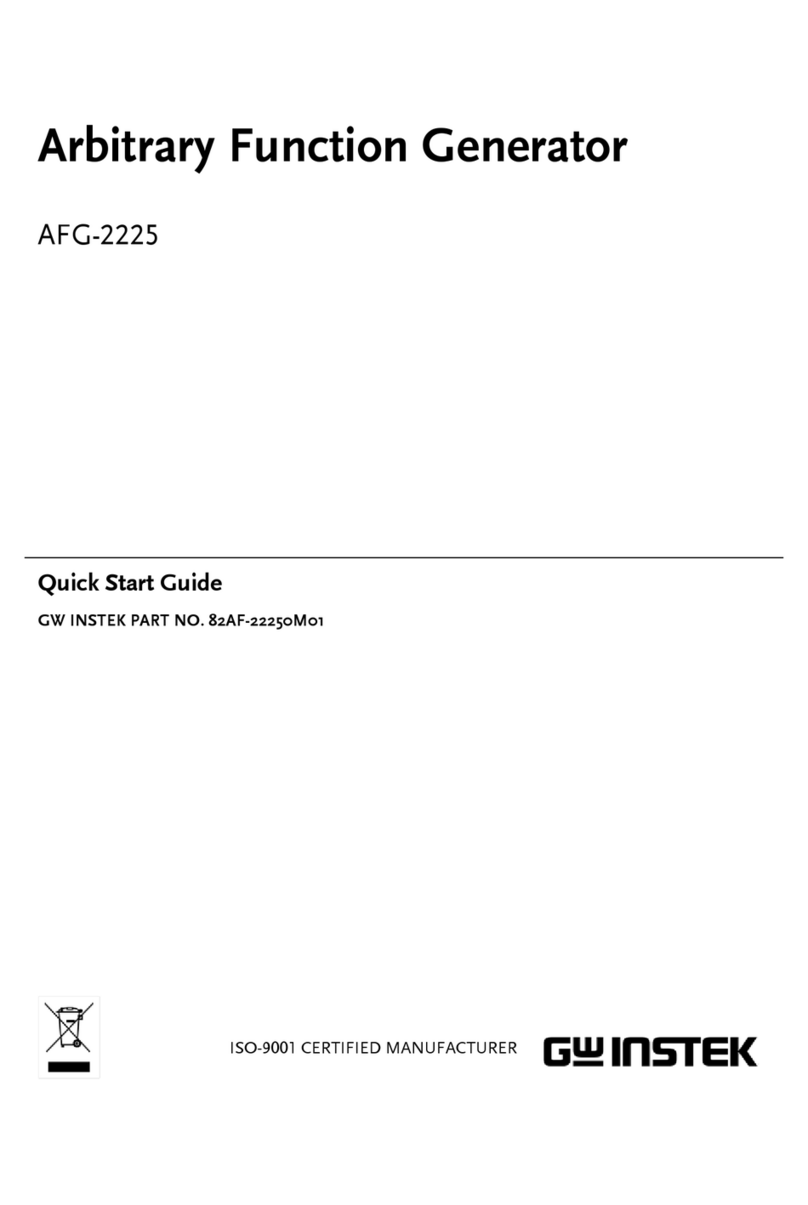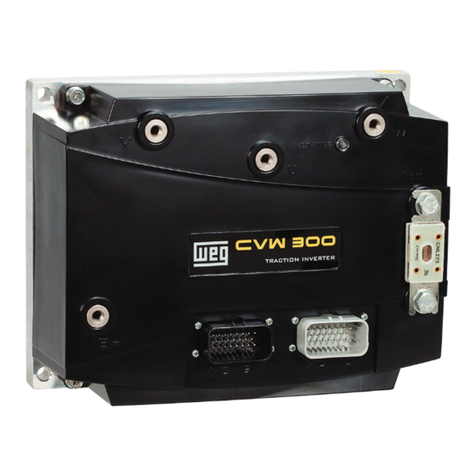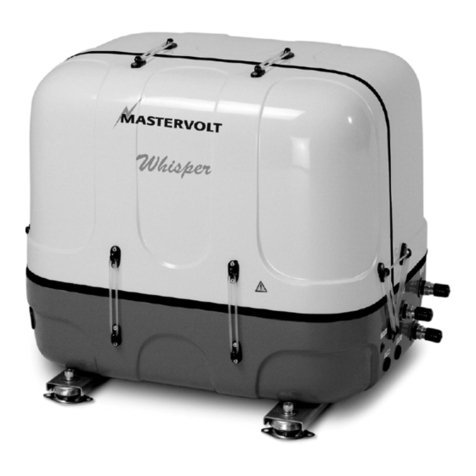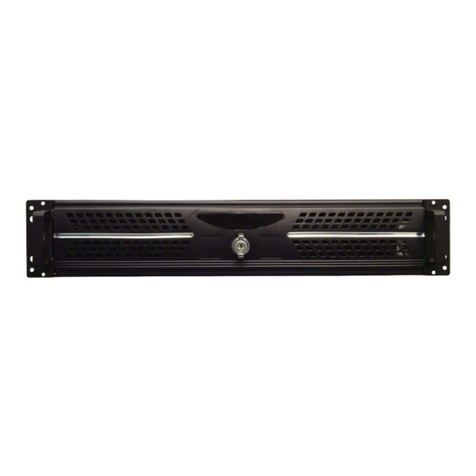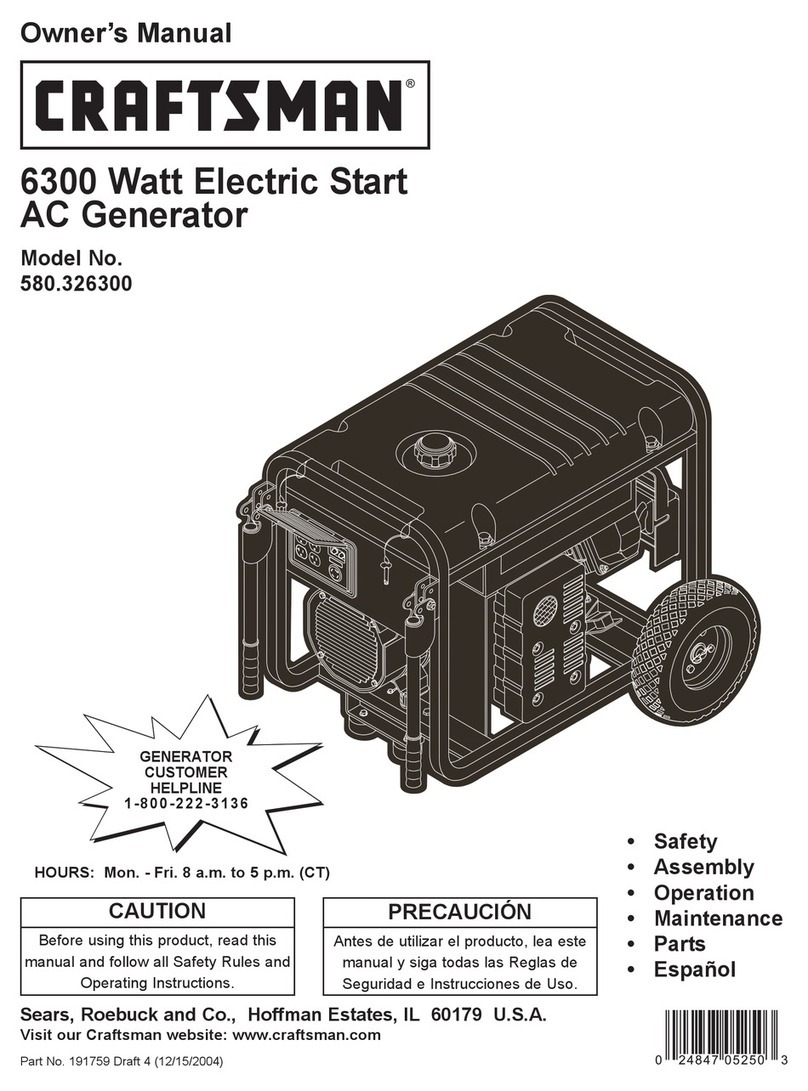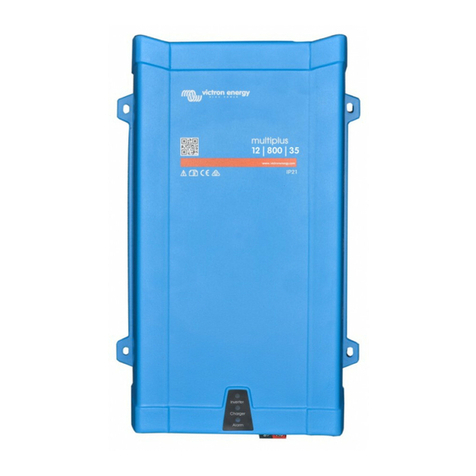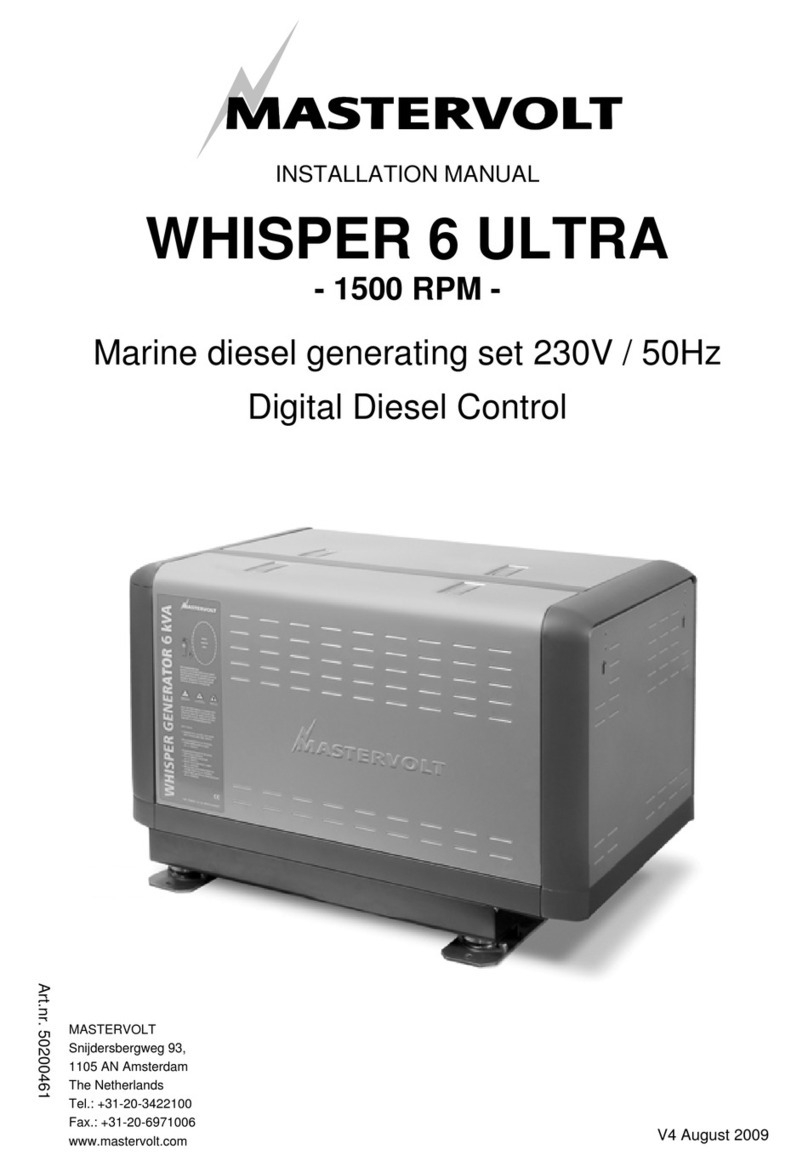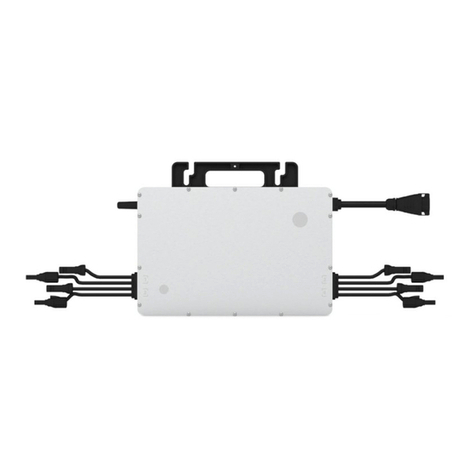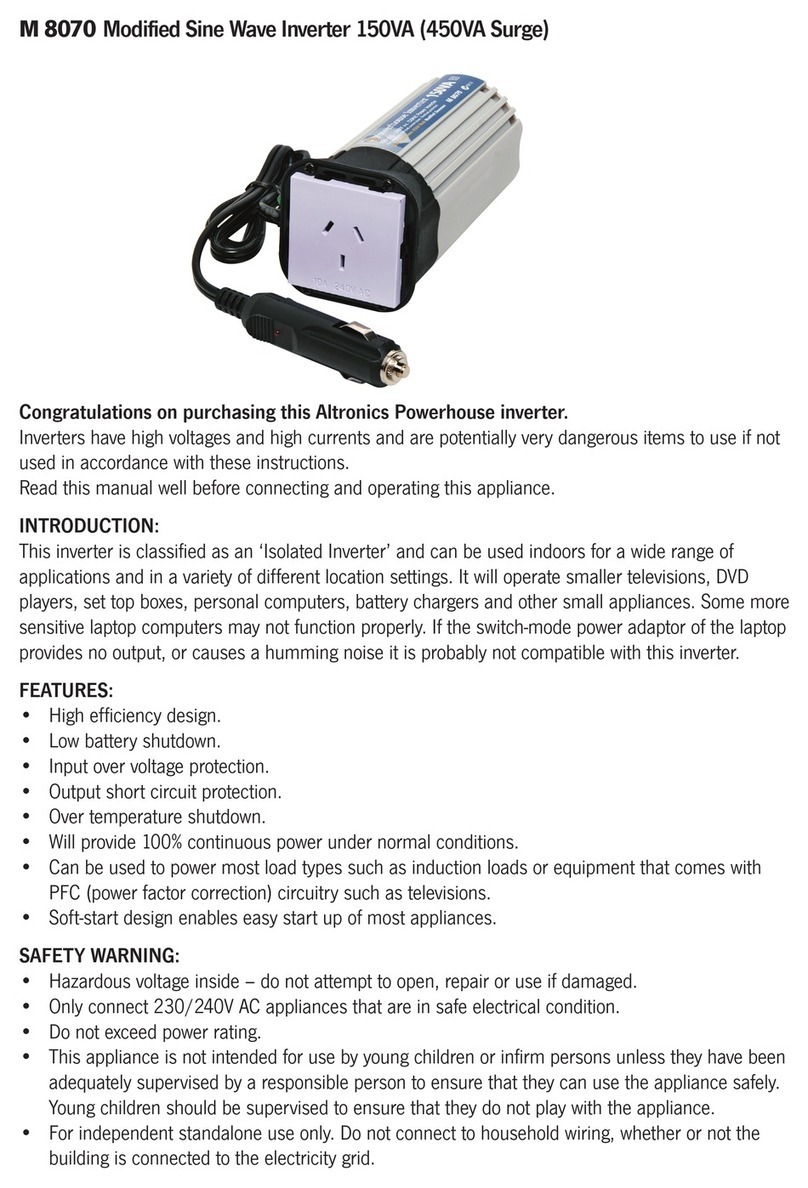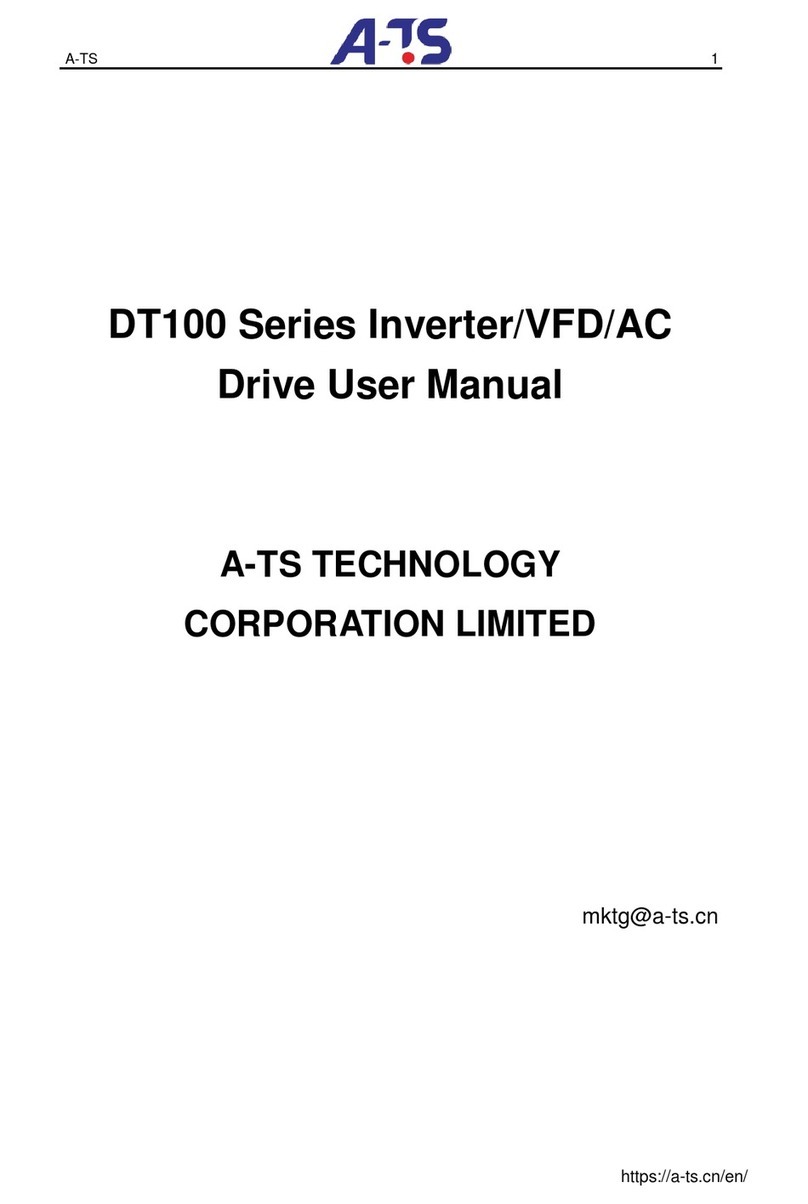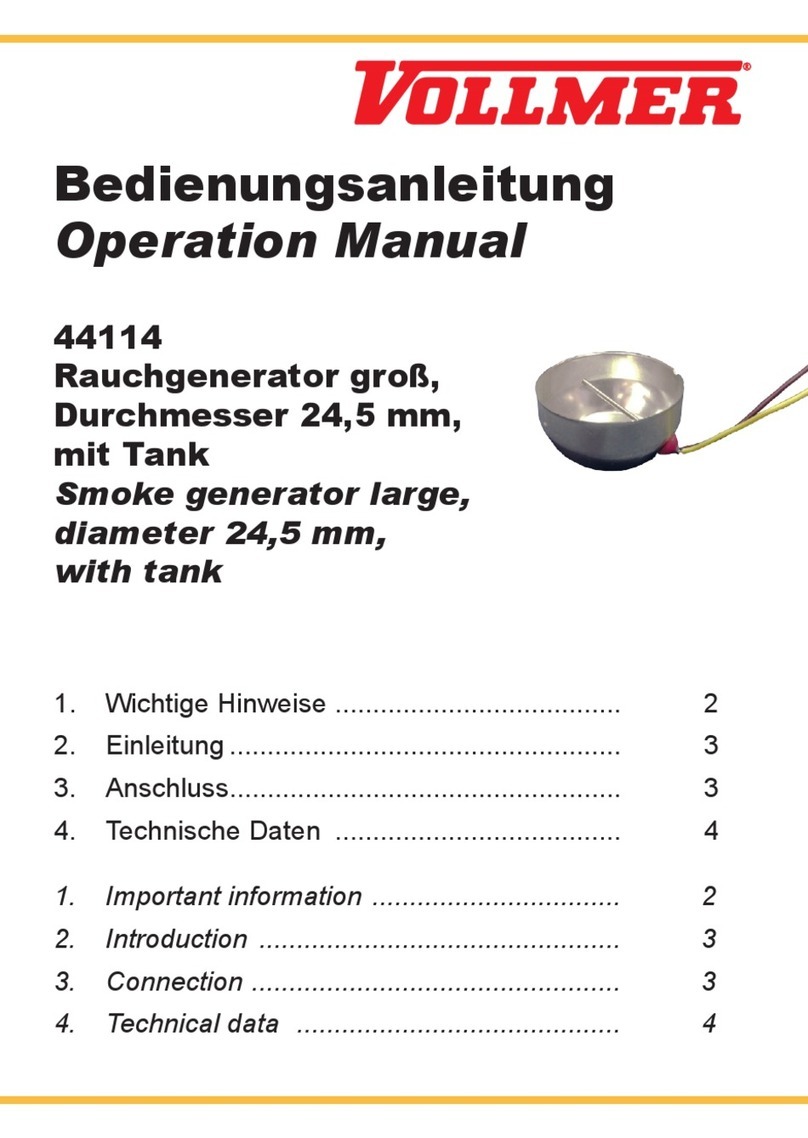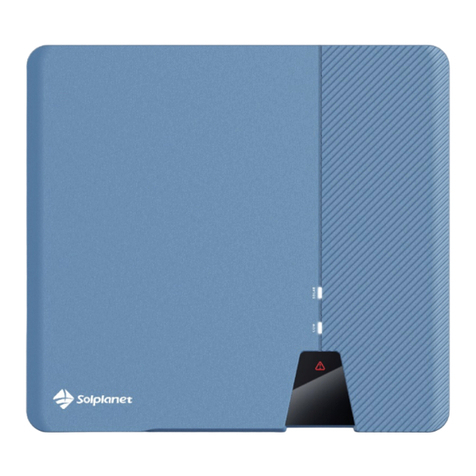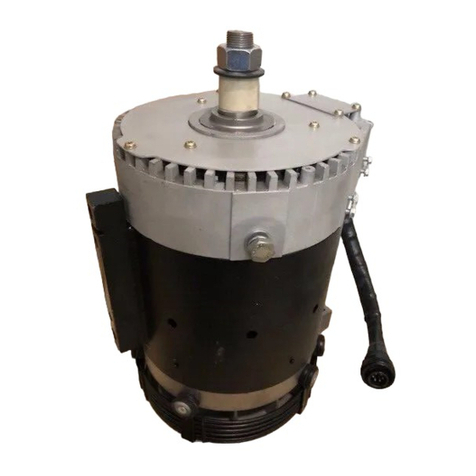BONFIGLIOLI ACTIVE CUBE Series Instructions for use

www.bonfiglioli.com
Bonfiglioli Riduttori S.p.A.
Via Giovanni XXIII, 7/A
40012 Lippo di Calderara di Reno
Bologna, Italy
tel: +39 051 647 3111
fax: +39 051 647 3126
bonfiglioli@bonfiglioli.com
www.bonfiglioli.com
VEC 541 R2 / ACU-STOV1-01SV2-03 en
ACTIVE CUBE
Application manual - Safe Torque Off
Bonfiglioli has been designing and developing innovative
and reliable power transmission and control solutions
for industry, mobile machinery and renewable energy
applications since 1956.


ACU-STOV1-01SV2-03 en
03/11 3
General Information about the Documentation
This application manual complements the operating instructions and the „Quick Start
Guide“ of the ACU frequency inverters (ACTIVE Cube series). It contains all relevant
information required for using the safety-oriented function „Safe Torque Off“ (STO).
For better clarity, the documentation is structured according to the customer-specific
requirements made on the frequency inverter.
Quick Start Guide
The Quick Start Guide describes the basic steps required for mechanical and electrical
installation of the frequency inverter. The guided commissioning supports you in the
selection of necessary parameters and the software configuration of the frequency
inverter.
Operating Instructions
The Operating Instructions describe and document all functions of the frequency
inverter. The parameters required for adapting the frequency inverter to specific ap-
plications as well as the wide range of additional functions are described in detail.
Application Manual
The application manual supplements the documentation for purposeful installation
and commissioning of the frequency inverter. Information on various subjects con-
nected with the use of the frequency inverter is described specific to the application.
Installation Instructions
Complementing the Brief Instructions and the Operating Instructions, the Installation
Instructions provide information on how to install and use the additional/optional
components.
If you need a copy of the documentation or additional information, contact your local
representative of BONFIGLIOLI.
The following pictograms and signal words are used in the documentation:
Danger!
Danger refers to an immediate threat. Non-compliance with the precaution described
may result in death, serious injury or material damage.
Warning!
Warning refers to a possible threat. Non-compliance with the warning may result in
death, serious injury or material damage.
Caution!
Caution refers to an immediate hazard. Non-compliance may result in personal or
material damage.
Attention!
Attention and the related text refer to a possible behavior or an undesired condition
which can occur during operation.
Note
marks information which facilitates handling for you and supplements the corre-
sponding part of the documentation.

4 ACU-STOV1-01SV2-03 en
03/11
TABLE OF CONTENTS
1General Safety Instructions and Information on Use.................................................... 5
1.1 Safety Instructions on Function „Safe Torque Off“ (STO).......................... 5
2Information of Risk Analysis and Risk Assessment....................................................... 7
3General Description of Safety Function ......................................................................... 8
3.1 Integrated Safety Function......................................................................... 8
3.2 Functional Safety........................................................................................ 8
3.3 Classification the safety requirement......................................................... 8
4Description of ACTIVE Cube Safety Function................................................................. 9
4.1 Two-Channel Monitoring .......................................................................... 10
4.2 Diagnosis function and enforced dynamizing........................................... 12
4.3 Diagnosis indicators.................................................................................. 13
5Requirements to be met by installation....................................................................... 14
5.1 Instructions on installation of safety equipment ..................................... 14
5.2 External Safety Control Equipment .......................................................... 15
5.3 External DC 24 V power supply ................................................................ 15
5.4 DC 24 V Power supply by ACU .................................................................. 16
6Requirements to be met in operation.......................................................................... 16
7Requirements to be met by acceptance inspection..................................................... 16
8Application Examples................................................................................................... 17
8.1 Direct Stop, Stop Category 0 .................................................................... 18
8.2 Direct Stop with Feedback to PLC, Stop Category 0................................. 19
8.3 Direct Stop, Stop Category 1 .................................................................... 20
8.4 Direct Stop with Feedback to PLC, Stop Category 1................................. 21
8.5 Internal DC 24 V Supply, Stop Category 1................................................ 22
8.6 Group Stop, Stop Category 1 .................................................................... 23
8.7 Error exclusion “short circuit” in the cabinet ........................................... 24
9Checklist....................................................................................................................... 25
10 Safety Function Test Report......................................................................................... 26
11 STO status (diagnosis)................................................................................................. 26
12 Index of Change........................................................................................................... 27

ACU-STOV1-01SV2-03 en
03/11 5
1General Safety Instructions and Information on Use
The present documentation was prepared with great care and it was subjected to
extensive and repeated reviews. For reasons of clarity, it was not possible to include
all details of all types of the product in the documentation. Neither was it possible to
consider all conceivable installation, operation or maintenance situations. If you re-
quire further information or if you meet with specific problems which are not dealt
with in sufficient detail in the documentation, contact your local BONFIGLIOLI agent.
We would also like to point out that the contents of this documentation do not form
part of any previous or existing agreement, assurance or legal relationship. Neither
are they intended to supplement or replace such agreements, assurances or legal
relationships. The manufacturer's obligations are exclusively specified in the relevant
purchase contract. This contract also contains all and any warranty regulations which
may apply to the relevant scope of supply. These contractual warranty provisions are
neither extended nor limited by the specifications contained in this documentation.
The manufacturer reserves the right to correct or amend the specifications, product
information and omissions in these operating instructions without notice. The manu-
facturer shall not be liable for any damage, injuries or costs which may be caused by
the aforementioned reasons.
Warning!
The specifications and instructions contained in the documentation
must be complied with strictly during installation and commissioning.
Only qualified staff who has read and understood the documentation is
allowed to carry out installation or commissioning work or to operate
the devices. The safety instructions must be complied with strictly. The
term „Qualified Staff“ refers to anybody who is familiar with the installa-
tion, assembly, commissioning and operation of the frequency inverter
and has the proper qualification for the job.
The present documentation complements the operating instructions ACTIVE Cube
(ACU). It contains additional safety information and requirements for the operation or
ACTIVE Cube (ACU) in safety-oriented applications. Use in safety-oriented machines
shall be permissible only after this documentation has been read carefully and un-
derstood. The applicable basic standards as well as application-specific and specific
national standards shall also be complied with – the standards referred to in this ma-
nual shall also be complied with.
This documentation was written in german language. Other language versions are
translated.
Copyright: This user manual is protected by copyright. It is solely intended for use
by operating staff and must not be copied nor disclosed to third parties.
1.1 Safety Instructions on Function „Safe Torque Off“ (STO)
The function „Safe Torque Off“ (STO) is a functional safety provision, i.e. it protects
staff from damage, provided that projecting, installation and operation are performed
properly. This function does not disconnect the machine from power supply.
The safety function “Safe torque off” (STO) can be used to realize an “Emergency
Stop” while the power supply is still active on the frequency inverter.
According to EN 60204 a provision must be provided for disconnecting the machine
from power supply for maintenance work.

6 ACU-STOV1-01SV2-03 en
03/11
Warning! Improper installation of the safety technique can cause an uncontrolled
starting of the drive. This may cause death, serious injuries and signifi-
cant material damage.
Safety functions may only be installed and commissioned by qualified
staff.
The STO function is not suitable for emergency switch off as per
EN 60204. An emergency switch off can be realized by installing a
mains contactor.
An emergency stop according to EN 60204 must be functioning in all
operation modes of the frequency inverter. Resetting of an emergency
stop must not result in uncontrolled starting of the drive.
The drive is started again when the function STO is no longer triggered.
In order to comply with EN 60204, it must be ensured by taking exter-
nal measures that the drive does not start without prior confirmation.
Without a mechanical brake, the drive might not stop immediately but
coast to a standstill. If this may result in personal or material damage,
additional safety measures must be taken.
If persons may be endangered after disconnection of the motor control
by STO, access to the hazard areas must be prevented until the drive
has stopped.
Check the safety function at regular intervals according to the results of
your risk assessment. BONFIGLIOLI VECTRON recommends that the
check is performed after one year, at the latest.
The STO function is one fault fail-safe. No single fault or component
failure can cause a disabled drive to produce motor shaft torque. Only
in extremely unlike combinations of component faults the motor shaft
could move jerky with sudden acceleration (maximum 180°/number of
pole pairs, for example jerky movement of 90° for 4-pole motor,
180°/2) and produce torque. It must be checked if this behavior can
cause a dangerous machine movement.
If the STO function is used, the special safety, installation and instruc-
tions on use instructions shall be complied with.
Warning! Dangerous voltage!
After disconnection of an external DC 24 V power supply, the DC link of
the frequency inverter is still connected to mains supply.
Even if the motor control is deactivated and the motor is coasting to a
standstill or has already stopped, high voltages may still be present on
the motor terminals.
Before working (e.g. maintenance) on live parts, the machine must
always be disconnected from mains supply (main switch). This must be
documented on the machine.
When the function “Safe Torque Off” is triggered, the motor is not iso-
lated from the DC link of the frequency inverter. High voltage levels
may be present at the motor.
Do not touch live terminals.

ACU-STOV1-01SV2-03 en
03/11 7
2Information of Risk Analysis and Risk Assessment
According to the Directive on Machinery 98/37/EC, the manufacturer of a machine is
obliged to carry out a risk analysis in order to identify the hazards related to the ma-
chine.
The Standard EN 14121-1 – Safety of machinery - Risk assessment – Principles –
describes the information required for risk assessment.
Risk assessment is effected according to the following criteria:
−degree of injury (serious/minor)
−frequency or duration of stay (frequent/seldom)
−possibilities of avoidance (hardly possible/possible)
For defined risks the Standards EN ISO 13849-1, IEC 61508 or EN 954-1 can be used
to accomplish a correct classification into Safety category, SIL (Safety Integrated
Level) or PL (Performance Level). These standards contain design principles for safe-
ty-relevant parts of control systems.
In the case of the safety function “Safe Torque Off”, the risk assessment must con-
sider the fact that the motor will coast to a standstill in the case of an error. Depend-
ing on the application, a mechanical brake may be required.
Responsibility:
The Manufacturer shall be responsible for the safety of the machine.
−risk analysis of hazards originating from the machine
−measures for reduction and elimination of the risks
−documentation of residual risk from the point of view of the manufacturer
−selection of suitable controller, installation of protective equipment, ergonomics,
documentation, warning of remaining risks
The operator of the machine is responsible for the safety of the application.
−risk analysis of hazards originating from the use of the machine
−documentation of residual risk from the point of view of the operator
−safe operation and protection of operating staff (barriers, instruction of operating
staff, etc.)
Selection of safety function:
−Risk analysis and risk assessment for machine (standards EN 12100-1,
EN 12100-2 and EN 14121-1)
−Risk reduction by machine design
−If not possible by design: risk reduction by protective equipment
−Identification of safety requirements
−Selection of category of safety function
- PL d according to EN ISO 13849-1
- SIL 2 according to IEC 61508
- Category 3 according to EN 954-1
Note: The Standard EN954-1 is replaced by the standard EN ISO 13849-1. The
legislator has rescheduled the transition period from 11-30-2009 to 12-
31-2011.

8 ACU-STOV1-01SV2-03 en
03/11
3General Description of Safety Function
3.1 Integrated Safety Function
Electronic protection systems are integrated in the drive control system and perform
safety functions in order to minimize or eliminate hazards caused by functional errors
of machines.
The integrated safety functions replace time-consuming and expensive installation of
external safety components.
The safety function can be requested or triggered by an error.
In hazard areas, setup work or work for elimination or errors may be required where
the safety function is not to be activated by isolating protection devices such as
mains contactors or motor contactors. Here, the additional safety function may be
used. STO can be used as an alternative to mains or motor contactors, which can be
omitted dependent on the application.
The integrated safety functions reduce the risk of personal damage in hazard areas
and reduce installation requirements.
3.2 Functional Safety
The safety function of the control system must be ensured for normal, trouble-free
operating sates as well as in the case of an error. As a result of this requirement:
−The safety function must be checked in case errors are present. Possible me-
thods include: error tree analysis, FMEA, etc.).
3.3 Classification the safety requirement
The integrated safety function “Safe Torque Off” of the ACU frequency inverter meets
the following requirements:
−up to safety integrity level SIL 2 according to DIN EN 61508 for STO (STO, Safe
Torque Off according to EN 61800-5-2)
−of category 3 according to DIN EN 954-1 (safe stop)
−up to performance level d according to EN 13849-1
In the case of an error, thanks to the safety function STO, the frequency inverter
does not supply energy to the motor which would cause a revolution or torque (or a
movement or force in the case of a linear motor).
Characteristic for the classification mentioned above:
−If an error occurs, the safety function is maintained.
By using appropriate safety control devices, stop category 0 and stop category 1
according to EN 60204 can be achieved in the machine. For safety control devices,
please refer to chapter 8.
Stop category 0: Stop by immediate disconnection of energy supply to the machine
drive elements, i.e. uncontrolled stop.
Stop category 1: Controlled stop, where energy is still being supplied to the drive
elements of the machine to perform the stopping operation. Energy supply is stopped
only after the drive has come to a standstill.
Note that the drive may not stop immediately but coast to a standstill. If no mechani-
cal brake is installed, or a defective brake may involve a risk, further protective
measures (in example tumbler) are to be taken.

ACU-STOV1-01SV2-03 en
03/11 9
4Description of ACTIVE Cube Safety Function
The frequency inverters of the ACU series of devices feature the integrated safety
function „Safe torque off, STO“.
In the case of an error or if requested, the power semiconductors of the frequency
inverter will be switched off. After this, the frequency inverter does not supply energy
to the drive which would cause a revolution or a torque (or a movement or force in
the case of a linear drive). Mains voltage is still present. The function STO can be
used, for example, for safe stopping in the case of a dangerous situation or for main-
tenance work on the machine. If an error occurs, the machine can still be (or remain)
switched off safely.
Unlike shut-down via mains contactors or motor contactors, the integrated safety
function enables easy combination of drives in a machine to form functional groups.
The Safe Torque Off can be limited to certain plant areas in this way. Another advan-
tage is the fact that it is not necessary to wait until the frequency inverter has been
charged and discharged. Thus, readiness of the machine for operation can be res-
tored more quickly. Regular electro mechanic equipment are wearing out – through
the usage of the STO functionality, this kind of equipment is no longer necessary and
maintenance costs can be reduced.
Safe Torque Off:
−Energy supply for the rotary field of the motor is interrupted; the motor coasts to
a standstill
−Used if monitoring for standstill is not required
−Accidental start of the motor is prevented
−No galvanic isolation of motor from frequency inverter DC link
Traditional System Integrated System
with ACU and usage of STO
Further advantages:
−Contactors on motor side not required, reduced installation
requirements, less components, more space in electrical cab-
inet
−Simple realization with external safety control device
−The drive can be connected to power supply continuously;
communication and parameter configuration of the frequency
inverter are maintained while the torque is disabled.
−Easier machine approval, because the safety function is certi-
fied via a type examination check.
Mains
K1
Frequency inverter
M
Ma
i
ns
ACTIVE Cube
with integrated
Safety function Safe Torque Of
f
M

10 ACU-STOV1-01SV2-03 en
03/11
Triggering of function “Safe Torque Off”
Safe Torque Off can be achieved by:
−Intentional triggering during operation in order to stop a drive and safely prevent
restarting, e.g. for maintenance work on a machine.
−Triggering by actuation of an emergency stop switch or monitoring of protective
systems, e.g. safety door.
−Detection of an error. The drive may only start again after the error has been
acknowledged and eliminated.
Application example:
The danger zone near a transport conveyor is monitored by a light grid. If anybody
enters the danger zone, the light grid is interrupted. The DC 24 V supply for the digi-
tal inputs STO of the function „Safe Torque Off“ is switched off and the frequency
inverter output stage is disabled. The drive coasts to a standstill. Disconnection from
mains supply is not necessary. Communication via field bus or addressing via the
terminals is still possible. An external brake which stops the motor can be addressed.
4.1 Two-Channel Monitoring
The STO function (Safe torque off) is realized via two channels in the frequency in-
verter (redundant design). Via two redundant monitored stop paths with no-voltage
release (STOA and STOB), the frequency inverter is switched off safely even if an
error occurs and the control voltage fails at the same time. Thus, the drive is stopped
safely if an error occurs. An error is identified and can then be repaired (e.g. by re-
placing of a unit). Triggering can be effected, for example, via a two-channel contac-
tor control with two release circuits and redundant disconnection of the main current
or via a sensor or emergency stop switch with two contacts and separate cable
routing to the evaluation unit.
The stop paths are monitored cyclically every 32 ms. Both stop paths are designed
identically.
Via the digital inputs S1IND (STOA) and S7IND (STOB), two DC 24 V control voltages
of a protection device are applied. If the protection device is actuated, the control
voltages are interrupted and the pulse block is activated; energy supply to the motor
is switched off. Disconnection is effected at a delay of less than 10 ms.
If the function STO is triggered, the overriding controller has no more influence on
the pulse block1in the frequency inverter. To restart, the pulse block has to be reset
and a release commanded by the operator or the superior PLC.
One single error will not result in a failure of the safety function.
1If the pulse block is set, the controller release is reset. If the pulse block is set, no motor revolving
field is generated.
Safe Torque Off
Actuation of safety relay
Detection of an error through self-diagnosis

ACU-STOV1-01SV2-03 en
03/11 11
Stop paths
The test required for monitoring is performed by the frequency inverter automatical-
ly. If the test results negative, the frequency inverter cannot be switched on any-
more. Starting is possible again only after the error has been repaired and the next
test has been completed successfully.
Truth table
In the truth table, the states of the safety-relevant inputs STOA and STOB for activa-
tion and deactivation of the safety function STO are listed.
Truth table
STOA STOB Description of state
0 0
Safety function “Safe Torque Off” (STO) has been triggered. The
frequency inverter signals no error in STO function.
0 1
STO is triggered. Monitoring for error in frequency inverter or ex-
ternal circuitry (5-second monitoring). After 5 seconds, an error is
signaled.
1 0
1 1
STO is not triggered. Release for operation.
5-second monitoring
It will be checked if the two inputs STOA or STOB are switched on within an interval
of less than 5 sec for requesting the release of the frequency inverter output stages.
If function STO is triggered by removing one of the signals from inputs STOA or
STOB, the status changes to “STO triggered”. Now, the unit waits that both inputs
are switched off. If this has not been done within 5 s after occurrence of this state,
an error is triggered (5-second monitoring).
If, during operation, an error is detected, the output stage is switched off, the release
is reset (“0”) and the frequency inverter signals an error. This status can only be left
by switching off (“0”) the two release inputs STOA and STOB.
−Different signal states on inputs STOA or STOB start the 5-second monitoring
−Within 5 seconds, the same signal must be present of both inputs, otherwise an
error will be signaled (F1205)
The function of external installation can be checked via the “5-second monitoring” by
actuating the protection device.
M
Mains
Power unit
Control unit
PWM
µC
S1IND (STOA)
Diagnosis and
monitoring
S7IND (STOB)

12 ACU-STOV1-01SV2-03 en
03/11
Behavior of frequency inverter after start
−Initialization
−Monitoring for release request (5-second monitoring)
−Preparation of release (check of stop paths)
−Release of frequency inverter
Behavior of frequency inverter in the case of an error
−Switch off of IGBT in power output stage by disconnection of optocoupler supply
voltage
−Suppression of control pulses of IGBT
−Setting of error bit with possibility of transfer to overriding controller
−Setting of digital output for error message
−Release of digital input for error acknowledgement.
4.2 Diagnosis function and enforced dynamizing
The two stop paths are monitored by the frequency inverter every 32 ms. If at least
one of the two inputs S1IND (STOA) or S7IND (STOB) is switched off, the pulse block
is activated. Additionally, a 5-second monitoring cycle begins for the other stop path.
If this path is not stop within 5 s, error F1205 is output.
The test required for monitoring the stop paths is performed by the frequency inver-
ter automatically. Via automated enforced dynamizing, the stop paths are checked
for errors. If the test result is negative, the frequency inverter cannot be switched on
anymore, and error F1201 is signaled. Starting is possible again only after the error
has been repaired and the next diagnosis cycle has been completed successfully.

ACU-STOV1-01SV2-03 en
03/11 13
Sequence of release and monitoring states depending on signals on control inputs
STOA and STOB:
In order to achieve robust operation and, for example, exclude electromagnetic inter-
ference in the signal assessment of the diagnosis function, the diagnosis is repeated
when an error is detected. The frequency inverter is switched over only if another
error is detected by the diagnosis function in operation status “STO Enable”.
Before the frequency inverter output stages are released:
−Check if STOA and STOB are switched on less than 5 s after one another (5s
monitoring). If this is the case, the release is prepared.
−Diagnosis for error in stop paths STOA and STOB. If no error is detected in the
stop paths and release has been prepared, the output stages are enabled.
4.3 Diagnosis indicators
The LEDs of the frequency inverter indicate if the safety function is activated proper-
ly.
LED
green red Description Rotary field on
motor
Off Off No supply voltage, unit is off No
On On Initialization and self-test No
Flashing Off Operation mode No
On Off Operating message Yes
On Flashing Warning message in operation Yes
Flashing Flashing Ready for operation and warning message No
Off Flashing Fault message No
Off On Error message can be acknowledged No
STOA
STOB
Diagnosis
ok
ok
ok
ok
ok
ok
ok ok ok ok ok fault ok
(Diagnosis fault)
t/m
s
4
32
12 301 2 4
STOA
Monitoring states
0: Monitoring of Enable Actuation
STOB
Diagnosis Enable
Monitoring
01 2 3 4 0
(5 s monitioring)
t/m
s
32 304 352 5260 5308
1: Preparation Enable
2: Enable
3: Actuation of STO
4: Fault
Diagnosis fault: Only if 2 consecutive faults are recognized, the monitoring function reports a fault.
0
5 s Monitoring: Checks, if both inputs STOA and STOB are switched on within 5 s from each other.
Monitoring
Diagnosis Enable
Diagnosis
fault fault

14 ACU-STOV1-01SV2-03 en
03/11
5Requirements to be met by installation
5.1 Instructions on installation of safety equipment
−If work is to be carried out on live components, it must be possible to disconnect
the machine from mains supply by means of a main switch.
−According to EN 61800-5-2 a fault exclusion can be considered with one of the
following possibilities:
oThe conductor is installed permanently and in example protected
against external damage with a cable duct or reinforcement.
oSingle multi-conductors are used.
oThe conductors are situated in an electrical cabinet.
oThe conductors are shielded independently and have grounding.
If applicable, the requirements of EN 60204-1 have to be considered to
install the connectors correctly.
−Protection against dirt is ensured if the ACTIVE Cube frequency inverters and
safety control equipment is installed in electrical cabinets with high IP protection,
e.g. IP 54.
−If external forces act on the drive axis, e.g. in the case of vertical axes (sus-
pended loads) or round axes with asymmetrical weight distribution, mechanical
brakes must be installed additionally.
−Only use voltage sources with safe disconnection (SELV/PELV) according to
VDE0100. Comply with the specifications in chapter 5.3.
−The ACTIVE Cube frequency inverters must not be supplied with pulsed signals.
Cross fault detection via pulsed signals cannot be used for this reason. Errors can
be excluded in the case of the ACTIVE Cube units because the terminal blocks for
the STO function are physically separate from one another. The signal cables be-
tween the safety control equipment and ACTIVE Cube must either be physically
separate from one another or suitable, cross fault proof cables.
−Comply with applicable EMC instructions mentioned in the operating instructions.
−After installation, check the safety function and error reaction and issue an ac-
ceptance report.
−Interrupting the STO signals prevents a start of the motor. According to
EN 60204-1, STO must not be released during an impending endangerment.
−Also comply with the instructions on external safety control equipment.
−During commissioning, check the safety function.
Select the dimensions of the safety application such that 14 mA input current is avail-
able for each of the inputs STOA and STOB. If more than one ACTIVE Cube frequen-
cy inverters are connected to one safety control device, the safety control device
must provide sufficient power for all of them.

ACU-STOV1-01SV2-03 en
03/11 15
5.2 External Safety Control Equipment
Safety control equipment, upon request (e.g. actuation of emergency stop or access
to hazard area, must trigger appropriate responses in order to protect people, the
machine and the environment. They evaluate sensor signals or safely switch off dan-
gerous states.
External safety control devices must meet the following requirements:
−External safety control equipment and safety modules for control of the digital
inputs (STO) must meet one of the following classifications, to meet the classifi-
cation of the ACU device:
oPL d according to EN ISO 13849-1
oSIL 2 according to IEC 61508
oCategory 3 according to EN 954-1
othe whole installation meets these requirements
−The switching capacity of the safety control equipment must be designed for the
maximum permissible, limited output current of the DC 24 power supply. Comply
with the instructions of the manufacturer of the safety control equipment on the
permissible contact load and any safeguards to be provided for the safety con-
tacts.
−The emergency stop device must comply with Standard EN ISO 13850.
−If a safety request (e.g. emergency stop actuated or sensor signals that safety
door is open) is reset (emergency stop unlocked, safety door closed) this alone
shall not result in a restart of the drive. Restart may only occur after the safety
control device has been reset.
External safety control devices evaluate sensors:
Examples of contact sensors:
−Emergency stop control device for stop in dangerous situations
−Position switch, e.g. for monitoring slide doors, safety grids or moving machine
parts
Examples of no-contact sensors:
−Light barriers, e.g. for monitoring areas with dangerous movements
−Light curtains
5.3 External DC 24 V power supply
During projection and installation of a DC 24 V supply connected to the frequency
inverter comply with the following instruction. This also includes supply of a safety
control device the output of which is connected to a control input (including STOA
and STOB) of the frequency inverter.
Attention! Use a suited SELV/PELV voltage supply, which rated voltage has to be
DC 24 V ±10 %. The largest overvoltage must not exceed DC 32 V in
the case of a fault (one fault safety). The one fault safety has to be
realized with an overvoltage protection of the mains supply (overvoltage
protection OVP with limiting the output voltage to a maximum of
DC 32 V) or an external wiring like a Crowbar. An adequate overvoltage
category of the voltage supply has to be ensured.

16 ACU-STOV1-01SV2-03 en
03/11
5.4 DC 24 V Power supply by ACU
You can use terminal X210A.1 in order to supply a safety control device. Only use the
power supply for the device connected to the frequency inverter. Other safety control
devices must not be connected. The maximum output current is 180 mA. The con-
nected device must not have higher current requirements.
6Requirements to be met in operation
During operation, the projected and commissioned machine components must not be
changed. If the machine is modified a new acceptance inspection is required.
Check the safety function at regular intervals. The test intervals are to be determined
according to the risk analysis. However, the check should be performed once every
year, at the latest.
7Requirements to be met by acceptance inspection
The acceptance inspection of the safety function is ordered by the manufacturer of
the machine. The inspection (acceptance) shall be performed by a properly qualified
person.
The result of the inspection is to be documented and must be signed by the inspec-
tor. Each safety function must be documented in detail in this report.
The inspections also include the machine documentation, including its safety func-
tions. The safety functions must be checked particularly during the inspection and
documented in the inspection report. Parameter settings shall be attached to the
report. Further documents shall be added, as required, depending on the machine.
Depending on the result of the risk analysis, inspection reports of the regular inspec-
tions shall be issued and signed by the inspector.

ACU-STOV1-01SV2-03 en
03/11 17
8Application Examples
The following examples illustrate how the “Safe Torque Off” function works. Accord-
ing to EN 60204, stop functions are divided in different categories. By suitable safety
control devices, stop categories 0 and 1 can be realized in combination with the fre-
quency inverter ACU.
Stop category 0: Stop by immediate disconnection of energy supply to the machine
drive elements, i.e. uncontrolled stop.
Stop category 1: Controlled stop, where energy is still being supplied to the drive
elements of the machine to perform the stopping operation. Energy supply is stopped
only after the drive has come to a standstill.
Stop functions must always have priority over start functions and must work properly
in any operation mode.
Resetting of the stop function must not cause any dangerous state.
The mechanical elements must be dimensioned properly for the stop category used.
If, for example, a mechanical brake is applied in the case of fast-rotating machines
via stop category 0, this brake must be able to stop the machine safely. Wear and
tear of the mechanical elements must be considered during projection for the operat-
ing states and indicated in the maintenance instructions.
Stop category 0 always has priority over stop category 1.

18 ACU-STOV1-01SV2-03 en
03/11
8.1 Direct Stop, Stop Category 0
The application example shows the minimum circuitry for ACTIVE cube frequency
inverters for realization of the safety function STO “Safe Torque Off” with an emer-
gency stop device in a common electrical cabinet.
If the emergency stop device with two stop channels according to EN ISO 13849-1 PL
d, IEC 61508 SIL 2 or EN954-1 Category 3 is actuated, both stop paths STOA and
STOB of the ACTIVE Cube frequency inverter are interrupted and the integrated safe-
ty function with safe pulse block with SIL 2 according to EN-61800-5-2 is activated.
A (non-safe) feedback to a process controller can be effected, for example, via a
connected field bus. If STO is requested, the overriding controller has no more influ-
ence on the pulse block in the frequency inverter.
Note: Terminal X210A.1 can be used for DC 24 V supply of the safety control
unit. Please note the current capacity of the frequency inverter (and the
current requirements of the safety control device.
Mains
STOA
STOB
Electrical cabinet
Field bus
connection
Safety control
equipment
Field bus
ACTIVE
Cube
1
M
2
3
4
5
6
7
1
2
3
4
5
6
7
+24 V
X210A
X310
X210B
+E20V
GND
S1IND
S2IND
S3IND
S4IND
S5IND
S6IND
S7IND
S1OUTD
MFO1A
10VRef
MFI1
GND
STOA: first shutdown path of the safety function STO
X210A, X210B, X10: Control terminals of the frequency inverter
S1IND ... S7IND: Digital inputs
S1OUTD: Digital output
MFO1A: Multi-function output (analo
g
/di
g
ital, frequency si
g
nal)
10VRef: Reference voltage DC 10 V
MFI1A: Multi-function input (analog/digital)
STOB: second shutdown path of the safety function STO
X310: Interface of communication module
+E20V: DC 20 V volta
g
e output or input for an external DC 24 V volta
g
e supply
Terminal X210A.2 : Earth 20 V/ Earth 24 V (ext.)
Terminal 210B.7: Earth 10 V
X10: Rela
y
out
p
ut
Relay
+24V S3OUT
1
2
3
X10
S3OUT.1
S3OUT.2
S3OUT.3
Safety circuit

ACU-STOV1-01SV2-03 en
03/11 19
8.2 Direct Stop with Feedback to PLC, Stop Category 0
The application circuit shows a drive control system according to EN ISO 13849-1
PL d, IEC 61508 SIL 2 or EN 954-1 category 3 with PLC and safety module. A PLC
performs the process control of the frequency inverter and can start the drive profiles
via commands.
If the protective device is actuated, e.g. safety door open, the enable paths of the
safety module are interrupted. As a result, the controller enable signal of the fre-
quency inverter is interrupted via the disconnection of the control voltages from
STOA and STOB and the integrated safe pulse block is activated.
The safety module monitors the function of the switches S1 and S2 which are located
outside of the electrical cabinet.
Relay
S3OUT
1
2
3
X10
S3OUT.1
S3OUT.2
S3OUT.3
M
Position switch displayed actuated
1
2
3
4
5
6
7
1
2
3
4
5
6
7
X210A
Mains
X210B
+E24V
GND
S1IND
S2IND
S3IND
S4IND
S5IND
S6IND
S7IND
S1OUTD
MFO1A
10VRef
MFI1A
GND
Sa
f
ety installation
opened
closed S1
S2
Safety control
equipment PLC
Acknowledgment
STOA
STOB
Start CW
Start CCW
ACTIVE
Cube
+24V
Feedback
Speed
Set value
Eletrical cabinet

20 ACU-STOV1-01SV2-03 en
03/11
8.3 Direct Stop, Stop Category 1
The application example shows the minimum circuitry for ACTIVE cube frequency
inverters for realization of the safety function STO “Safe Torque Off” with an emer-
gency stop device in a common electrical cabinet.
When the emergency stop device is actuated, the travel command “Clockwise” is
reset first. After a delay tv, the contacts on the safety switch interrupt the two enable
paths STOA and STOB of the ACTIVE Cube frequency inverter and the integrated
safety function is activated. The delay time is set on the safety control device and
must be selected according to the application. The set delay time has to be higher
than the shut down time.
A (non-safe) feedback to a process controller can be effected, for example, via a
connected field bus. If STO is requested, the overriding controller has no more influ-
ence on the pulse block in the frequency inverter.
Mains
Electrical cabinet
Field bus
connection
Field bus
ACTIVE
Cube
1
M
2
3
4
5
6
7
1
2
3
4
5
6
7
X210A
X310
X210B
+E20V
GND
S1IND
S2IND
S3IND
S4IND
S5IND
S6IND
S7IND
S1OUTD
MFO1A
10VRef
MFI1
GND
Safety circuit
Start CW
+24 V
t
v
Safety control
equipment
Acknowledgment
Safety installation
opened
closed S1
S2
t:timedela
y
between si
g
nalin
g
contact and shutdown contact
v
Position switch displayed actuated
STOA
STOB
STOA: first shutdown path of the safety function STO
X210A, X210B, X10: Control terminals of the frequency inverter
S1IND ... S7IND: Digital inputs
S1OUTD: Digital output
MFO1: Multi-function output (analog/digital, frequency signal)
10VRef: Reference voltage DC 10 V
MFI1: Multi-function input (analog/digital)
STOB: second shutdown path of the safety function STO
X310: Interface of communication module
+E20V: DC 20 V voltage output or input for an external DC 24 V voltage supply
Terminal X210A.2 : Earth 20 V/ Earth 24 V (ext.)
Terminal 210B.7: Earth 10 V
X10: Relay output
Relay
+24V S3OUT
1
2
3
X10
S3OUT.1
S3OUT.2
S3OUT.3
Other manuals for ACTIVE CUBE Series
1
Table of contents
Other BONFIGLIOLI Inverter manuals
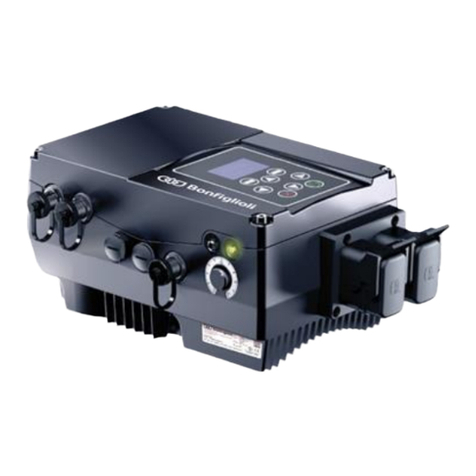
BONFIGLIOLI
BONFIGLIOLI DGM MPM User manual
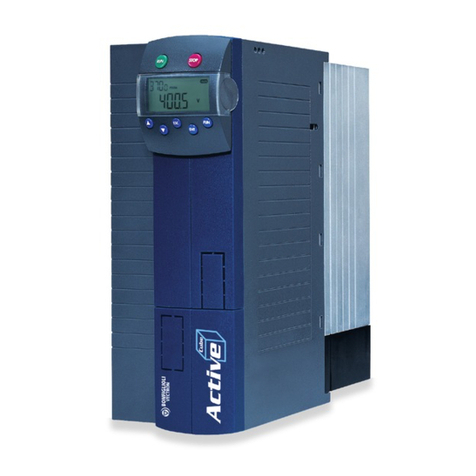
BONFIGLIOLI
BONFIGLIOLI Active Cube User manual

BONFIGLIOLI
BONFIGLIOLI ACTIVE Cube ACU 201-01 User manual
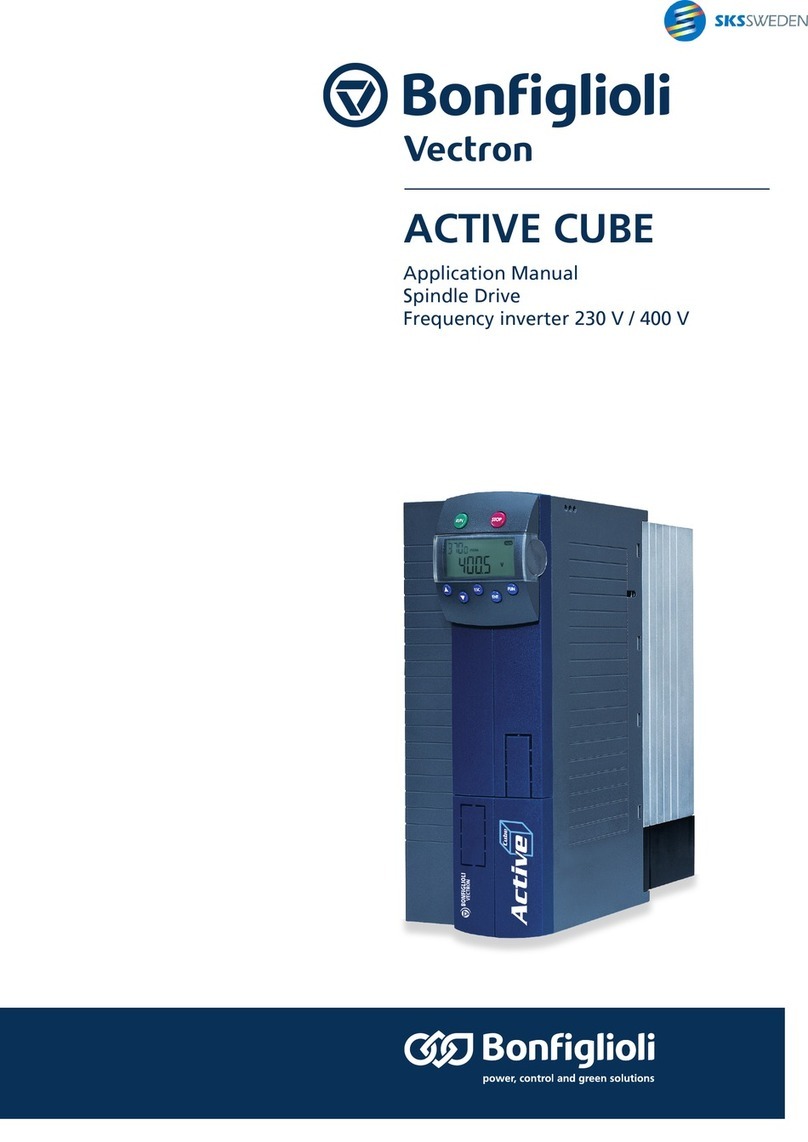
BONFIGLIOLI
BONFIGLIOLI Active Cube Instructions for use

BONFIGLIOLI
BONFIGLIOLI Active Cube User manual

BONFIGLIOLI
BONFIGLIOLI Active Cube Instructions for use
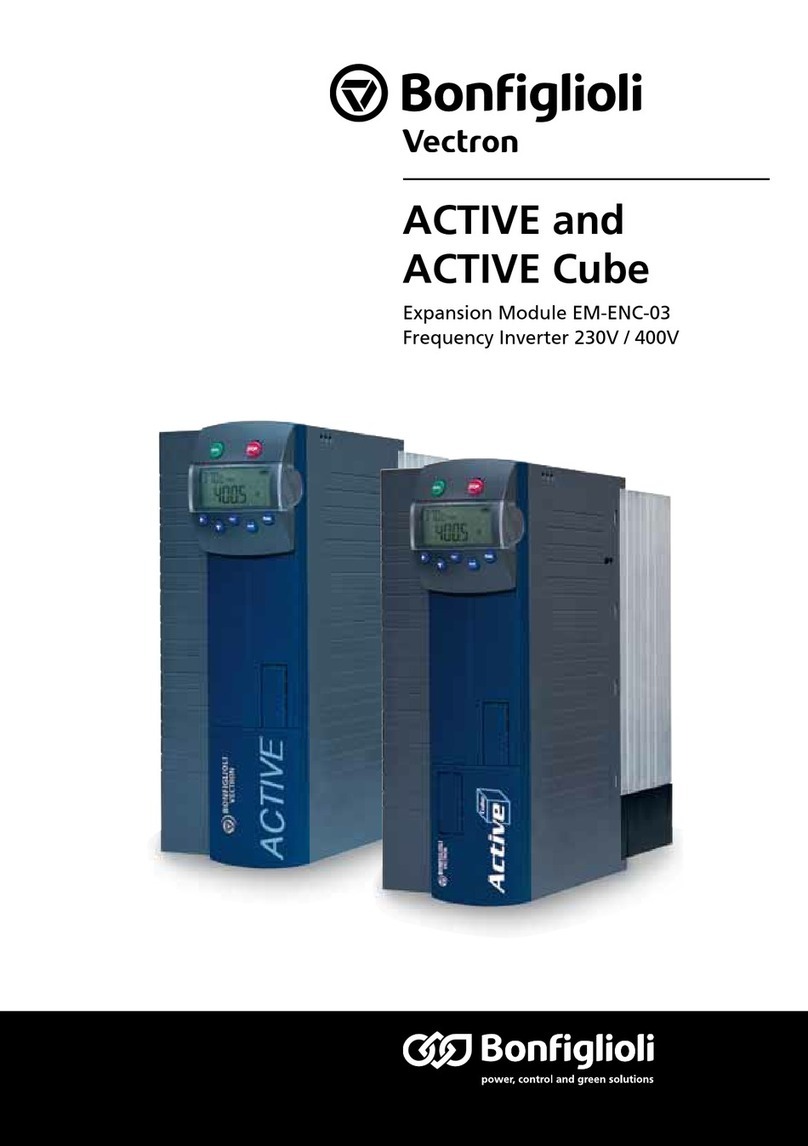
BONFIGLIOLI
BONFIGLIOLI actice User manual
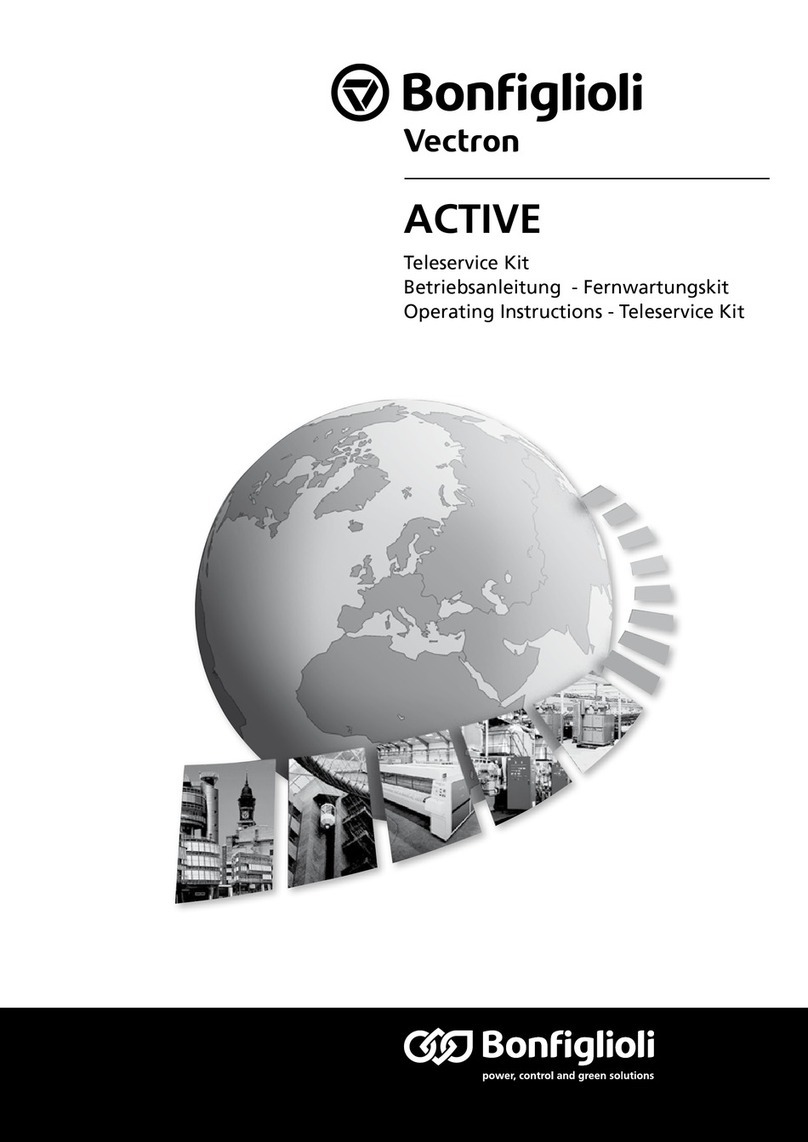
BONFIGLIOLI
BONFIGLIOLI active User manual
